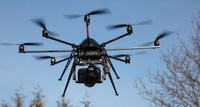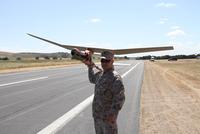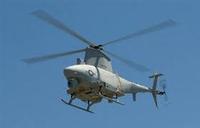-
First response, law enforcement UAVs, robot markets to grow
Training and simulation account for $13.73 billion in spending by the U.S. Department of Defense budget in 2012, roughly 2 percent the DoDs total budget, and UAV training is a not-insignificant part of that budget; first-responder robot markets, valued at $440.4 million in 2011, are anticipated to reach $1.6 billion by 2018
-
-
UAV flight training and simulation market to reach $451.9 million in 2012
The proliferation of UAVs, and their utility on the modern battlefield, will see demand for the services they offer continue to rise into the next decade; this demand will be accompanied by a requirement for more skilled UAV pilots and sensor operators
-
-
FAA moves on integrating drones into U.S. airspace

The Federal Aviation Administration (FAA) now allows a government public safety agency and first responders to operate drones weighing 4.4 pounds or less in the U.S. air space, but under certain restrictions: these drones should be used for training and performance evaluation, they must be flown within the line of sight of the operator, less than 400 feet above the ground, during daylight conditions, inside Class G (uncontrolled) airspace, and more than five miles from any airport or other location with aviation activities; the FAA says that if safety agencies then apply for a waiver, the agency will allow the operation of drones weighing up to twenty-five pounds
-
-
Flying robots equipped with 3D gear: better surveillance on the cheap

Whether deployed to create virtual maps of difficult-to-access areas, monitor construction sites, measure contamination at nuclear power plants, assess conditions in a disaster-ravaged area, or identify rowdy soccer hooligans, mini UAVs could be used in a wide range of applications, obviating the need for expensive aerial photography or satellite imaging
-
-
DARPA wants technology to see through clouds
Soldiers who encounter enemy forces on the ground benefit from overhead aircraft support; some capabilities are lost, however, when cloud-cover obscures the view; DARPA is seeking advanced, flyable electronics and scene simulation technology for video synthetic aperture radar
-
-
Seattle police takes steps to quell drone concerns
The Seattle Police Department recently acquired a small camera-equipped drone, but it remains unused while city policymakers work to calm privacy concerns
-
-
U.S. military seeking non-lethal UAVs

The U.S. Army is seeking non-lethal warheads to be deployed on tiny UAVs; the U.S. Army describes the possible uses of the non-lethal UAV: “Potential commercial applications might include, but are not limited to: crowd control for local law enforcement; border protection for Homeland Security; or temporary incapacitation of non violent criminals for local SWAT teams and/or law enforcement”
-
-
First U.S. drone attack in Pakistan in a month kills four terrorists
Yesterday, Sunday, missiles launched from a CIA drone missiles hit military targets in Pakistan for the first time in a month. The attack killed four al Qaeda members, but further heightening tensions between the United States and Pakistan. Back in November 2011, U.S. airstrikes, called in by Pakistani commanders n the ground, killed twenty-four Pakistani soldiers. In response, Pakistan said that unless the United States apologized for the incident, no more U.S. drone attack would be allowed against terror targets inside Pakistan. The United States expressed regrets over the death of the soldiers, but refused to apologize, saying the accident was the result of mistakes and miscommunication on both sides. Since November, the United States has reduced considerably the number of drone attacks inside Pakistan, but has refused to end such attacks altogether. The U.S. refusal has led to Pakistani parliament, on three different occasions, to pass resolutions calling upon the United States to cease and desist.
-
-
New micro helicopters for search and rescue missions
New micro helicopters have a diameter of about fifty centimeters, weigh only 1,500 grams; they do not rquire GPS or remote control to navigate; they are designed to maneuver in tight or even enclosed spaces, and to detect and fly around any obstacle; possible uses could include protection or rescue missions, and they are ideal for flying over disaster areas and giving a picture of the situation from the air or locating victims
-
-
Worldwide UAV market to reach more than $94 billion in ten years
UAV spending will almost double over the next decade from current worldwide UAV expenditures of $5.9 billion annually to $11.3 billion, totaling just over $94 billion in the next ten years; the UAV payload market, worth $2.6 billion in Fiscal Year 2011, is forecast to increase to $5.6 billion in Fiscal Year 2020
-
-
DHS brings military technology to border surveillance
The long list of products and equipment developed for the military but which were adapted to and adopted by civilian and law enforcement agencies has a new entry. Add to the list the Kestrel: a L-3 Wescam MX 360-degree camera mounted to a Raven Aerostar aerostat
-
-
Small UAV wins Border Security Product Challenge award
A small surveillance UAV catches the eye of law enforcement and the military; it is an electric-powered, lightweight, portable system that fits in a small rucksack. Its modular design enables assembly and launch in less than two minutes
-
-
Surveillance technology along the border
A South Dakota blimp maker has one of its airships take part in a border security technology demonstration; the demonstration was put together to allow the CBP to evaluate a new surveillance system for use on the border
-
-
State Department expands use of drones in Iraq
With the U.S. military out of Iraq, the State Department has taken to operating a small fleet of unarmed surveillance drones to protect American personnel, which has resulted in sharp criticism from the Iraqi government who say the unmanned craft are an insult to Iraqi sovereignty
-
-
Helping UAVs to land safely in an emergency

One obstacle to the wider use of UAVs in domestic missions such as law enforcement is the fact that UAV flight plans are set pre-flight, and if something goes wrong and they need to land they have no way to determining where the safest landing spot is; in most cases they just drop; engineers are developing a system which will allow UAVs sense and avoid other traffic and determine appropriate landing spots should the need arise
-
More headlines
The long view
Using Drone Swarms to Fight Forest Fires
Forest fires are becoming increasingly catastrophic across the world, accelerated by climate change. Researchers are using multiple swarms of drones to tackle natural disasters like forest fires.
Testing Cutting-Edge Counter-Drone Technology
Drones have many positive applications, bad actors can use them for nefarious purposes. Two recent field demonstrations brought government, academia, and industry together to evaluate innovative counter-unmanned aircraft systems.
